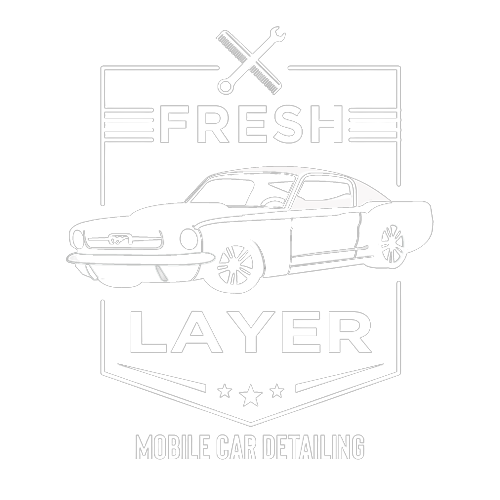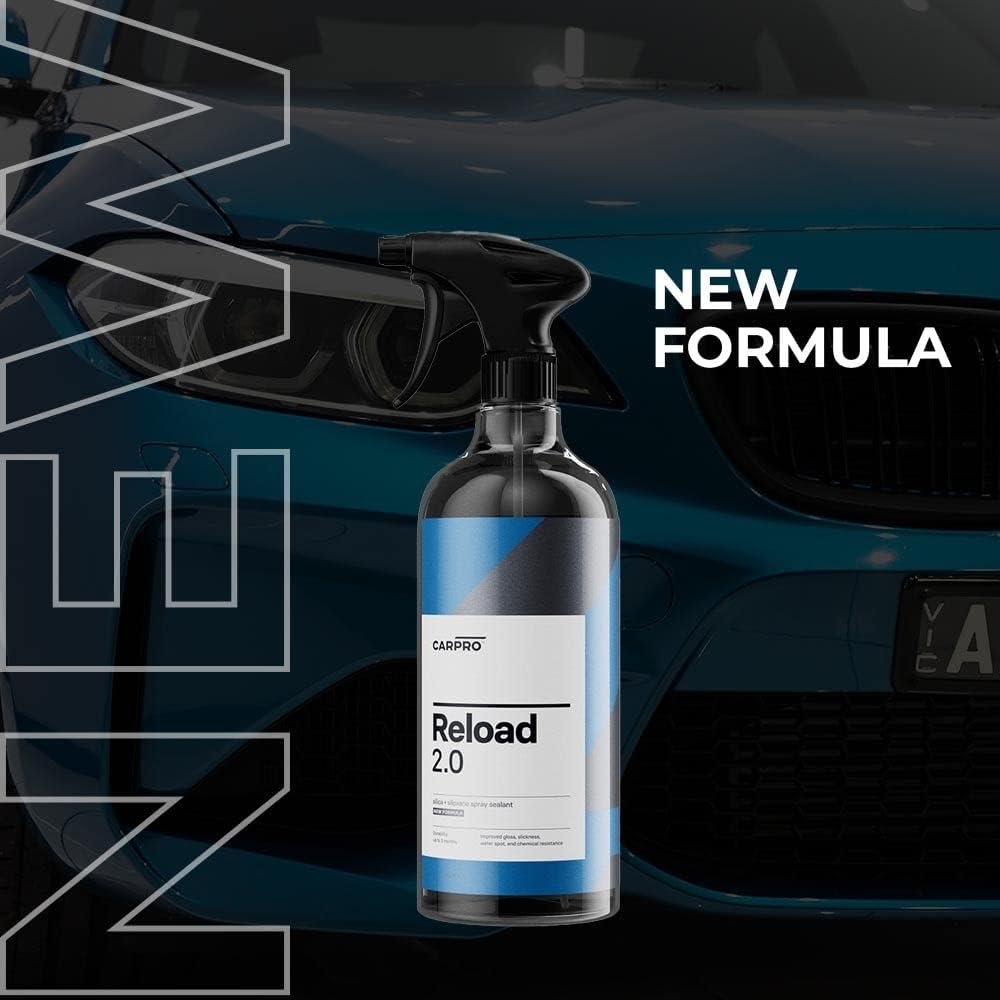Can you wax a car that has ceramic coating ?
Ceramic Coating and Wax – Do They Work Together?
Ceramic coating has revolutionized car care, offering superior protection, unmatched shine, and longevity that far surpasses traditional waxing.
But a common question lingers among car enthusiasts: Can you wax a car that already has ceramic coating?
The short answer is yes, but the long answer is more nuanced. In this article, we’ll delve into the compatibility of wax with ceramic coating, discuss the benefits and drawbacks, and answer frequently asked questions.
By the end, you’ll have a clear understanding of whether waxing your ceramic-coated car is worth it or if it’s simply redundant.
Why Consider Waxing Over Ceramic Coating?
Given the robust protection offered by ceramic coatings, many car owners are curious about the need or possibility of waxing their ceramic-coated vehicles.
The question arises because waxing has traditionally been the go-to method for enhancing a car's shine and protective layer.
However, with the advent of ceramic technologies, car enthusiasts and experts often debate whether waxing adds any benefit to a ceramic-coated car or if it might interfere with the coating's functionality.
This article explores the relationship between ceramic coatings and wax, addressing common concerns and providing clarity on how to best maintain the aesthetic and integrity of coated vehicles.
Can You Wax Over Ceramic Coating?
Yes, you can wax over a ceramic-coated car, but it’s generally unnecessary. Here’s why:
Redundancy: Ceramic coating already provides superior shine and protection. Adding wax may not significantly enhance these qualities.
Hydrophobic Interference: Wax can interfere with the coating’s hydrophobic properties, potentially reducing its effectiveness.
Short-Term Benefits: Wax offers temporary enhancement but does not bond with the ceramic coating, meaning it will wear off quickly.
Pro Tip
Instead of waxing, use ceramic coating boosters designed to rejuvenate the coating and enhance its performance.
Expert Opinions and Manufacturer Recommendations
Most manufacturers of ceramic coatings and experts in automotive detailing generally advise against waxing over a ceramic coating. The primary reason is that ceramic coatings are designed to repel water and contaminants on their own.
Adding wax can interfere with this hydrophobic property, reducing the effectiveness of the ceramic layer. Moreover, since ceramic coatings are already providing a high level of gloss and protection, throwing wax into the mix might be unnecessary and could actually make things worse.
Interaction of Wax with Ceramic Coatings
Wax typically works by creating a physical barrier on the paint’s surface, which can enhance shine and protect against minor abrasions and contaminants.
However, when applied over a ceramic coating, the wax doesn't stick as well. Ceramic coatings have a tightly bonded structure that doesn't offer a good surface for wax to bond to, which can result in the wax appearing streaky or uneven and wearing off more quickly than expected.
Ceramic coatings have a tightly bonded matrix that is not conducive to allowing wax to bond well. As a result, the wax can end up looking streaky or uneven and may wear off quickly, reducing both aesthetics and functionality.
Potential Downsides of Applying Wax Over Ceramic Coating
The downsides of applying wax over a ceramic coating are more concrete:
Reduced Effectiveness: Wax can block the hydrophobic properties of the ceramic coating, leading to increased water spotting and diminished self-cleaning properties.
Aesthetic Issues: Wax can accumulate unevenly on the ceramic-coated surface, leading to smears and streaks that detract from the vehicle’s appearance.
Maintenance Challenges: Additional layers of wax can make the maintenance of the vehicle more cumbersome, as the wax needs to be removed and reapplied more frequently than the ceramic coating alone.
Ultimately, while you can technically apply wax over a ceramic coating, it is generally not recommended. The ceramic coating alone should provide all the protection and shine your vehicle needs without the potential complications of additional wax layers.
The Purpose of Waxing a Car
Waxing a car has long been a staple in the routine of vehicle maintenance, cherished for its ability to enhance the aesthetic appeal and protect the vehicle's exterior. Here are the traditional reasons why car owners wax their vehicles and the benefits they expect from doing so.
Traditional Reasons for Waxing a Car
Protection: Wax forms a protective barrier on the car's paint surface, shielding it from various environmental hazards such as UV rays, bird droppings, tree sap, and pollutants that could cause fading and oxidation over time.
Shine: Applying wax is one of the most effective ways to enhance the natural gloss of a car’s paint, giving it a fresh, vibrant look. This enhanced shine is often associated with a well-maintained and new-looking vehicle.
Water Repellency: Car wax creates a hydrophobic surface that repels water. Water beads up and rolls off more easily, minimizing water spots and potentially reducing the amount of dirt that sticks to the vehicle's surface.
Benefits of Waxing That Car Owners Typically Expect
Enhanced Aesthetics: A well-waxed car often looks more appealing and well-cared for, which can contribute to higher resale values and personal satisfaction for the owner.
Reduced Surface Scratches: The layer of wax can help protect against minor scratches and swirls from washing or light contact by adding an extra layer of protection over the paint.
Easier Cleaning: With its water-repelling properties, wax helps keep cars cleaner for longer periods. Dirt and grime have a harder time sticking to a waxed surface, making the vehicle easier to wash and maintain.
For those interested in finding the best wax products currently available on the market or looking for more detailed advice on car waxing, I recommend checking out our latest blog post. This post not only reviews top wax options but also shares tips and tricks for applying wax to get the best results. Click here to read our full guide on the best car wax options.
Additionally, you can watch our detailed vlog on how to properly wax your car for professional results. This video includes step-by-step instructions and demonstrates the benefits of regular waxing. Watch our vlog on car waxing here.
When Should You Consider Waxing a Ceramic-Coated Car?
Waxing a ceramic-coated car might make sense in these scenarios:
For Added Shine: If you’re prepping for a car show or event and want an extra glossy finish, a layer of high-quality wax can enhance the appearance.
Temporary Protection: If your ceramic coating is nearing the end of its lifespan, wax can provide additional protection until you reapply the coating.
Personal Preference: Some car owners simply enjoy the process and added shine of waxing, even if it’s redundant.
Alternative Ways to Enhance Ceramic Coatings
What to Use Instead of Wax
For maintaining a ceramic-coated car, use these alternatives:
Ceramic Boosters: Enhance the coating’s hydrophobic and gloss properties.
Recommended Product: CarPro Reload Spray Sealant.
pH-Neutral Wash Products: Gentle soaps designed to clean without harming the coating.
Detail Sprays: Add shine and remove light dust between washes.
While ceramic coatings offer excellent protection and shine for your vehicle's exterior, proper maintenance can significantly extend their effectiveness and durability.
There are specific products designed for this purpose that provide better alternatives to traditional waxing methods, which may not be suitable for ceramic-coated surfaces.
For those interested in learning more about how to properly maintain a ceramic coating to ensure it remains effective and continues to protect your vehicle, we have a comprehensive guide on our blog.
This post dives deeper into the best practices for caring for ceramic coatings and reviews the top products designed for this purpose. Visit our blog post on how to maintain ceramic coatings for detailed instructions and expert tips.
Advantages of Ceramic Coating Over Wax
Long-Lasting Protection: Ceramic coatings last years, while wax requires frequent reapplication.
Superior Shine: Offers a deeper, reflective gloss.
Low Maintenance: Dirt and water slide off effortlessly.
Durability: Resistant to UV rays, chemicals, and minor scratches.
Statistic: Ceramic coating reduces cleaning time by 50%, making it a favorite among busy car owners.
Common Myths and Misconceptions
Ceramic coatings have revolutionized car care, but misconceptions about their use and maintenance persist. Let's address some common myths and clarify what you should and shouldn't do with ceramic-coated cars when it comes to detailing.
Debunking Myths About Ceramic Coatings and Waxing
Myth: Ceramic coatings are scratch-proof. While ceramic coatings provide excellent protection against minor scratches, they are not completely scratch-proof. They primarily offer enhanced resistance against etching from chemicals and UV damage.
Myth: You need to wax over a ceramic coating for extra shine and protection. In fact, waxing a ceramic-coated car can hinder the performance of the coating. Ceramic coatings are designed to provide superior shine and protection without the need for wax.
Myth: Ceramic coatings last forever. Ceramic coatings are durable, but they do not last indefinitely. Their lifespan depends on factors such as the quality of the coating, the application, and how well the car is maintained.
Detailing Ceramic-Coated Cars: Dos and Don'ts
Do: Use pH-neutral, ceramic-specific cleaning products.
Don't: Use harsh chemicals or abrasive tools that can degrade the coating.
Do: Perform regular maintenance washes using proper techniques to avoid damaging the coating.
Don't: Assume all detailers know how to handle ceramic-coated vehicles. Ensure they are experienced with coated cars.
FAQs
-
It is not recommended to wax over a ceramic coating as it can interfere with its designed properties, such as hydrophobicity and durability.
-
Regular maintenance is key. Most experts recommend a thorough wash every two weeks and a more detailed inspection and maintenance every six months to ensure the coating's longevity.
-
While ceramic coatings offer great protection against environmental contaminants and minor abrasions, they do not make your car impervious to all types of damage, such as deep scratches or dents from physical impacts
-
No, it's best to use a pH-neutral shampoo designed specifically for ceramic-coated vehicles. These shampoos are formulated to clean without damaging the coating.
-
Yes, in most cases, a ceramic coating can be repaired if it's damaged. This usually involves reapplying the coating to the affected area. It’s important to have this done by a professional to ensure that it matches the rest of the coating.
Conclusion
Throughout this discussion, we've explored the effectiveness of ceramic coatings and addressed common myths and misconceptions.
It's clear that while ceramic coatings offer substantial benefits in terms of protection and aesthetics, they require specific care routines different from traditional wax-based methods.
The use of appropriate maintenance products designed for ceramic coatings not only preserves but enhances these benefits.
Our final recommendation is to avoid waxing ceramic-coated cars. Instead, focus on using the right products and techniques tailored for ceramic coatings to ensure optimal performance and longevity.
For more detailed information on how to care for your ceramic-coated vehicle, be sure to check our comprehensive guide on our blog.







